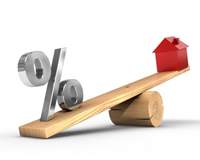Can you imagine life without mortgage loans?
To say the least, only a very few families would be living in their own homes. The reality is, most people can’t really afford to pay Spot Cash on a piece of property. Even a 2-year interest-free, installment payment is still hard on the average family’s budget.
But thanks to financing programs like mortgage loans (or housing loans), many families now enjoy having a roof over their heads while still paying the property over a series of monthly payments on a longer term.
The concept is actually very simple. Given the appraised value of the property, a lending institution can assist the buyer in purchasing the property by financing part of the price. Normally, the lending company may shoulder up to 80% of the property’s price and the borrower should be able to raise the 20% cash down payment.
See also :
Pag-IBIG Member Benefits and Responsibilities
As a member of the Pag-IBIG Fund, one of the benefits you can enjoy as member is becoming eligible for Pag-IBIG Housing Loan and paying it in longer periods of up to 30 years.
One of the most important things you need to understand about Pag-IBIG Housing Loan, or any mortgage loan for that matter, is that, it is a secured form of financing. This means that when you sign a housing loan with Pag-IBIG, there are two points that you need to keep in mind:
- You promise to repay loan on time as set in the agreement.
- You put the property as collateral to backup your pledge.
The moment you fail to pay on the scheduled monthly amortization, that’s when the Foreclosure clock starts to tick.
It’s a very stressful event and you should do everything in your capacity to contact the Pag-IBIG Fund branch where you applied for the housing loan before it’s too late.
Collateral Requirement of Pag-IBIG Housing Loan
You should already know that Pag-IBIG Housing Loan is only applicable to residential types of properties; not commercial properties.
The collateral requirement of Pag-IBIG Home Loan is very simple: A clean Title (TCT/CCT) issued by the Registry of Deeds.
Important points to remember:
- The tax on the real property must be updated.
- The borrower is required to submit a copy of tax receipts.
Furthermore, the following properties / Titles are not acceptable as collateral:
- Free / Homestead / Miscellaneous Sales Patent Titles
- Properties with Encumbrances
- Properties with Liens
See the following related articles:
Buyer, Beware
Take note of the above-mentioned list of “unacceptable collateral” because they are very important especially if you are buying from individual sellers; that is, not from developer corporations.
When buying a property, insist on getting a copy of the Title — (TCT for Lot, or CCT for condominium unit). Once you have it, verify its status at your local Registry of Deeds. Always avoid buying properties that belong to any of the three categories mentioned above.
Foreclosure properties are another type of properties you should avoid at all costs until you have educated yourself already on the whole idea. However, if you are not that confident yet, forget about all those money-making schemes they preach in Foreclosure Seminars. These properties are much more complicated and a much more painful investment than seminar experts would want to believe.
~~~
“On Collateral And The Pag-IBIG Housing Loan” is written by Carlos Velasco.

 This is another word for Down Payment, a term mostly used by Banks; Pag-IBIG uses the term equity to mean the same thing.
This is another word for Down Payment, a term mostly used by Banks; Pag-IBIG uses the term equity to mean the same thing.  You may think that getting the assistance of a real estate agent will make the property more expensive. Whoever told you that must be very ignorant of the whole process.
You may think that getting the assistance of a real estate agent will make the property more expensive. Whoever told you that must be very ignorant of the whole process.